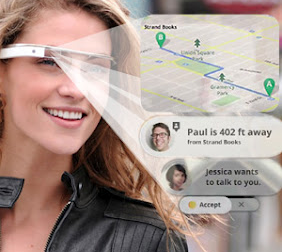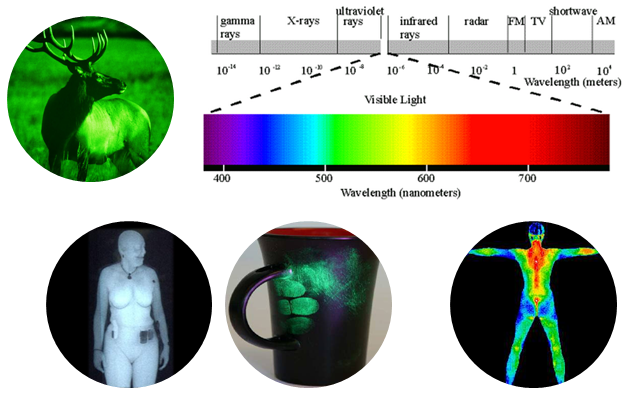Bionic Eye Gives Hope for the Blind

(originally published on May 3, 2013, updated May 20, 2021)
Dr. Mark Humayun was going to be a doctor all along, but when a family member lost her eyesight, he soon began his journey as an innovator. “When I was going through medical school, my grandmother went blind and there was really no cure for her,” the Duke University graduate says. “And it made me rethink my career and focus more on how to restore sight to those who are going blind.”
Now a professor at the Keck School of Medicine at the University of Southern California, Humayun has invented the Argus Ocular Implant, a sort of bionic eye that allows blind patients to see again. According a press release on the school’s website, the intraocular retinal prosthesis “restores some visual capabilities for patients whose blindness is caused by Retinitis Pigmentosa (RP). RP is an inherited retinal degenerative disease that affects about 100,000 people nationwide.”
Read the rest of the story and comment at Huffington Post. But note that I’ve replaced the original video with another I found online.
Bionic Eye Future implications
As a futurist, I like to think about the impact of trends I see today. Consider how digital imaging has evolved in our own lifetimes, from when Kodak’s first solid-state sensors converted light into a cluster of picture elements (pixels, or dots) in 1970. A sensor array on a computer chip already includes thousands of pixels (640×480 = 307,200 of them) or millions (3872×2592 = 10,036,224). And since semiconductor technology evolves exponentially, it’s easy to imagine that picture resolution and image sensing will continue to improve well beyond what human eyes can see today, including digital magnification.
Digital imaging in night goggles already amplifies light so we can see in the dark. Take that further and apply it to the ability to sense energy that’s beyond the wavelength of visible light, including X-rays, ultraviolet, and infrared.
 How will we perceive and use new digital imaging? Will we wear 3D goggles, Google Glasses, or contact lenses where the images are converted to what the retina in our eyes can see? Or will we tie into the optic nerve or somehow otherwise interface with the brain.
How will we perceive and use new digital imaging? Will we wear 3D goggles, Google Glasses, or contact lenses where the images are converted to what the retina in our eyes can see? Or will we tie into the optic nerve or somehow otherwise interface with the brain.
What’s Likely versus what’s Possible
If we consider how far imaging has come in 40 years and how tech innovation evolves exponentially, what’s possible in the next 40 years seems beyond our imagination. In many ways it may be driven less by what’s technically possible, and more by what society wants and needs. Dr. Humayun’s work is addressing one of those needs.
May 2021 Update
I retired from IBM in October, 1999, but at least two years before then the company was already working with Boing on an application pairing a heads-up display with a wearable computer. They wanted aircraft technicians to work on the Boing 747 and see service manuals superimposed over whatever they they were servicing. You see, a printed version of those manuals would fill the entire aircraft. Digital would be a huge enhancement, and augmented reality even better. That was almost 25 years ago.
Today I saw a market research report from Harbor Research that I found hard to believe. It extended IBM’s Pervasive Computing concept into Spacial Computing and Extended Reality, blending Virtual Reality headsets with Apple’s Augmented Reality concept paired with enhanced glasses like Google introduced in 2013. It was their market projection that set me off.
The analysts at Harbor Research projected 10-fold market growth — from 8.3 million heads-up display devices in 2020 to 87.3 million in 2025. That 5 year growth seems absurd compared to the relatively little progress since IBM’s Boing project decades ago. I scanned the full report and watched their panel discussion webinar: Extending Reality: The Future of Augmented, Virtual and Mixed Realities, but I still came away skeptical, especially in the consumer space. That’s even though I consider myself a technological optimist. But one thing I did appreciate was their discussion of forces accelerating adoption and forces slowing it.



*Would this procedure help someone with Macular Degeneration, my best friend of over 50 years is suffering from this, is there any way she can be helped?
Thank you for reading my email.
Regards;
Patricia Kowalski
Patricia, I’m sorry to hear about your friend but fear this is not a solution, yet. I encourage you to follow the link to the school’s website and potentially track down the researchers that way. As I understand it, the people who’ve had this procedure did it as part of a clinical trial and that it’s not yet FDA approved. You can keep up with specific news on the topic with Google Alerts. Just Google “Google Alerts” to learn more. You can create a custom query using keywords like “macular degeneration technology” or “macular degeneration treatment” and get email notifications when anything new appears. ‘Hope this helps.
Related Articles:
The revolution in technology that is helping blind people see